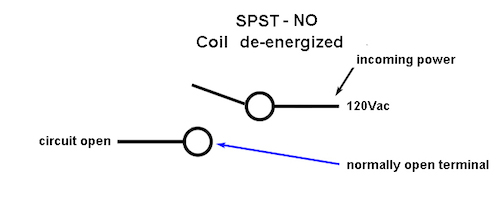Bert Weiss wrote:I agree with Brad here, but I do it only slightly differently. I use a mechanical DPDT contactor attached to a hitemp limit circuit with a light switch, and a SPST SSR controlling the kiln. This setup allows you to remove all power to the elements when you want safety, and control the elements the most efficient way. On the last system I put together, I used the high temp feature on the Bartlett RTC 1000 controller instead of a redundant hi temp controller.
BTW, I bought some used Watlow Dinamite SCR's from Brad around 17 or 18 years ago. Not one has failed on me in all that time. They are firing away as I write this.
I once made the mistake of buying 480 volt SCR's, thinking that meant up to 480v. They don't work on 240v. I have a set of 6 if anybody is working with a 480v setup.
We actually do it pretty much the same way, Bert. What I posted above is really only half of my wiring diagram - the part showing the SSR and contactor. I split the original wiring diagram into two parts because I thought a drawing showing everything at once was too cluttered to easily comprehend.
The diagram in this post is the other part that shows the safety circuit wiring, which utilizes both a door switch and an alarm relay of the controller for an overtemp switch. On my annealer I also have a timer switch that I can use to cut the power to the oven manually, or by setting the timer to kill the power. The timer switch I use is a heavy duty switch like this one - http://www.lowes.com/pd_30194-251-T104___?Ntt=t104

A smaller, cheaper timer could be used by wiring it into the safety circuit like you did with your light switch, instead of on the main power lines, as mine is wired. But I like the extra peace of mind of cutting off the main power directly. (And I have a bunch of these switches I picked up as surplus a while back, so why not?) However, 99.9% of the time either way will work equally well.

TOB
P.S. Glad to hear the Watlows are still chugging along for you.


